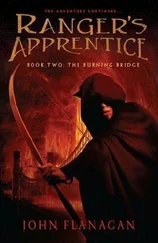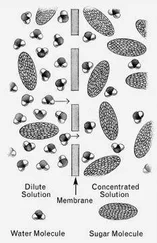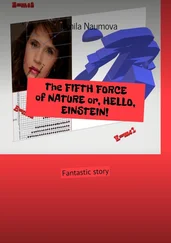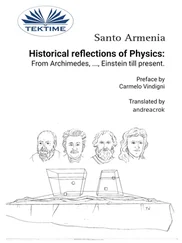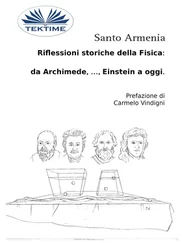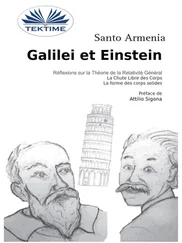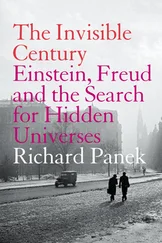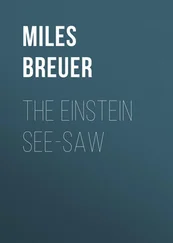Out her left window Alice could see a corrugated tin structure in the distance. “The SSC people don’t like the plant poisoning?”
“No,” said Whitey. “The spray fumes was gettin’ into the ventilation system, they said, and makin’ their people sick. Got them EPA inspectors after the farmers, and they made them stop. Now the cotton farmers get only one crop a year. They say the SSC cut their income in half for no good reason, though they still look pretty well off to me.
“But I hear they’re startin’ to use some new poison that’s okay, some plant hormone stuff that makes the cotton plant kill itself. Like commitin’ suicide? I just hope it don’t do that to the SSC folks.” He grinned.
Alice smiled back. This had definite possibilities as an explanation of the origins of the giant mutant fire ants, she thought. Plant hormones plus radiation… She nodded to herself.
“Now we’re over the SSC ring on the east side,” Whitey said. “See where the Interstate crosses that highway? The green stripe on the highway marks where the ring goes underneath, and that white building over there is one of the service buildings for cry-o-genics and pumpin’ and things. They got ’em all around the ring.”
She nodded, stopping at the intersection. “Where to now?” she asked.
“Turn south, Miss Alice,” said Whitey. “The east campus begins right up ahead.”
She turned and accelerated. “I’ve never been over here before,” she said.
Whitey nodded. “If you was to keep driving south on this road,” he said, “you’d come to the SDC building. The other big detector? And farther on down south is the town of Ennis. Settled by Czech people in the 1880s. If you like to do the polka, Ennis is the place for you. It’s still mostly Catholic, and at the eatin’ places in Ennis you can get beer and wine with your dinner. Even farther on down the road is the little town of Alma. Now it’s real wet in Alma, a regular oasis. You can get anything in Alma.” He looked across at her, then blushed. “Anything to drink, I mean, ma’am.”
THROUGH THE WINDSHIELD ALICE CAUGHT GLIMPSES of a large blocky building. They came to an intersection marked by a neat sign pointed to the right branch of the road. It bore the inscription U.S. DEPARTMENT OF ENERGY, SUPERCONDUCTING SUPER COLLIDER, EAST CAMPUS NORTH.
“That’s where we’re goin’,” said Whitey.
Alice followed the road, which led to the large hangarlike building she had seen from a distance. It looked like one of the large NASA assembly buildings at Cape Canaveral. It was flanked by a smaller office building.
She drove into the parking lot and found an area labeled visitors next to HANDICAPPED and DR. J-K WANG. As she opened her car door and left its air-conditioned interior, the afternoon Texas heat struck her again like a warm damp slap. Whitey headed off to the large open building, and Alice strode up the walk to the office building’s reception area, already regretting her panty hose and white business suit.
The digital clock at the reception area read 2:23. The building was blessedly air-conditioned. Standing beside the desk was a tall man with sandy blond hair and a darker beard. Alice put out her hand. “Hello, George,” she said. “My, how you’ve grown since I saw you last.” She wondered how old he was. Perhaps a vigorous forty-five or so? She decided she liked him, perhaps even felt a certain attraction.
He laughed as he took her hand. “The telepresence remotes they have at the SSC administration building are the cheaper model that doesn’t have hands and doesn’t provide an adjustment for individual height differences,” said George. “It’s a bit disconcerting at first to have to look up at everyone. But perhaps it promotes humility. We physicists could use more humility, I’m told.
“Over here at LEM we use models that have adjustable height with arms and hands. Perhaps there’s also a certain symbolism. In the administration building one needs to talk. Over here there’s work to be done, so we need hands.” He gestured with his hands, as if to illustrate.
Alice nodded. “Your office is here?” She found that she was distracted, watching his hands and imagining them replaced by metal robotic manipulators.
“Yes,” said George. “All of us working on the LEM detector have our offices here. There’s a building like this for each pair of experiments.”
“Pair?” asked Alice. She told herself to focus on what the man was saying so she could ask intelligent questions instead of parroting a word or two.
George walked to a large diagram of the SSC complex on the wall and pointed. “See the two beam paths — here and here?” he said, indicating places on the flat sides of the ring where the red line of the beam split into two. “The machine is designed so that there are a pair of side-by-side experiments that can alternate using the beam. The experiment on one path uses the beam while the experiment on the other path is setting up. Here on the east side of the ring the bedrock under the tunnel can support the most weight, so the biggest experiments are placed here. The west side of the ring has the SSC campus with the administration building, the smaller experiments, and the injector complex. Our experiment and SDC have been designated ‘primary’ by the program advisory committee so we share the same beam leg and get 80 percent of the Collider beam time. Experiments EA-3 and EA-4 are set up on the other leg — here. They’re considered ‘tertiary’ and get about 20 percent of the available beam. We share the LEM building with the EA-3 people.”
“So the same beam goes through LEM and SDC?” Alice asked, focusing her camera on the diagram. “Doesn’t one experiment interfere with the other?”
George laughed. “That’s why your interview with Roy was delayed. One experiment isn’t supposed to even notice that the other experiment is there. But Jake Wang, the spokesman for our collaboration, is absolutely convinced that the SDC people have done something that has degraded the beam we get, and he’s been hassling Roy about it. I think Jake is wrong, but nobody has asked for my opinion in the matter.”
Alice was surprised at the frankness of his comment. There must be some tensions in the LEM group, she concluded, storing that fact away for later use. She looked at the diagram again. “What experiments are over there by the campus?” she asked.
“That’s called the west experimental campus,” said George. “The ‘secondary’ experiments WA-1 through WA-4 are located over on the west side of the ring.” He pointed to the place on the left side of the diagram where the red line split into two paths. “They each get 50 percent of the beam, more or less.”
Alice pointed to two circles near the split. “Where are these?” she asked.
“That’s the injector system. We accelerate protons, first with an RF quadrupole, then with a linac, then in this small magnet ring, and then in the intermediate one, until finally they get up to sufficient energy to be injected into the main SSC ring. We inject half of the protons so that they go clockwise, with the other half going counterclockwise, and then we bash them together. The SSC’s injector system is about the size of the old Fermilab accelerator in Illinois. That used to be the largest accelerator in the world, back in the 1970s. As we say in particle physics, ‘Yesterday’s premier accelerator is tomorrow’s injector, yesterday’s Nobel prize-winning discovery is tomorrow’s background.’”
Alice smiled as she took notes. “And will there be an even bigger accelerator that will use the SSC as an injector?” she asked.
George shrugged. “Almost certainly not,” he said. “Perhaps when we get better at building superconducting magnets the SSC might be eventually upgraded with new magnets that make higher fields. That might boost the energy by a factor of two or so. But if particle physics continues to be a hot field and some next-generation accelerator needs to be built, it would probably have to use a new and presently undeveloped technology like plasma waves or laser acceleration, and it would probably be arranged in a straight line rather than a ring.”
Читать дальше



